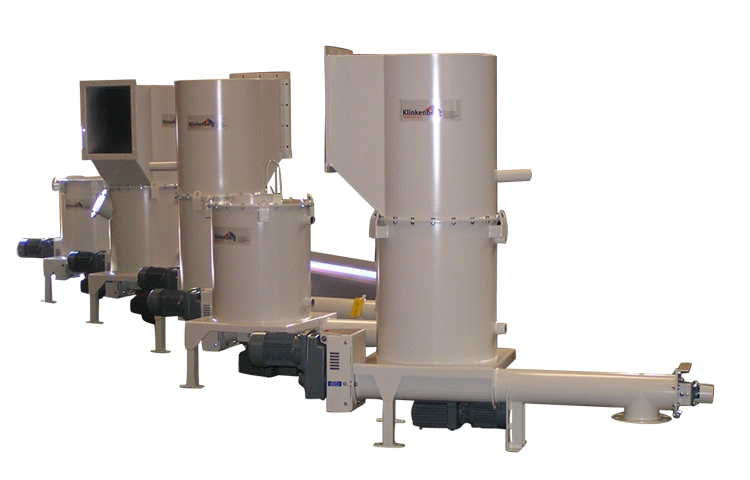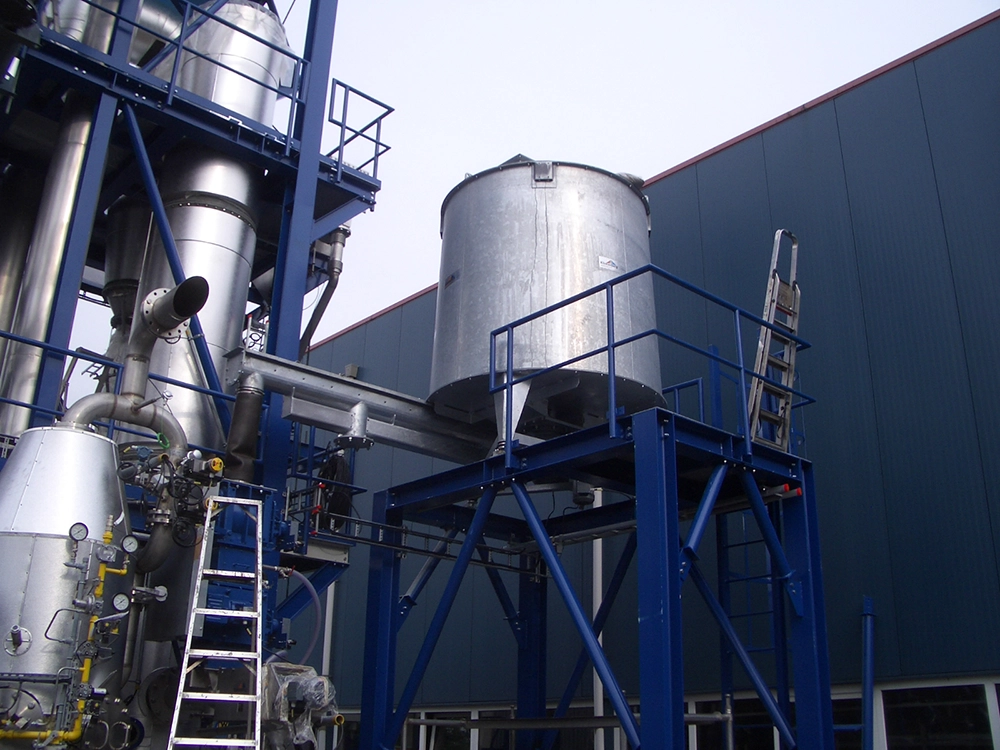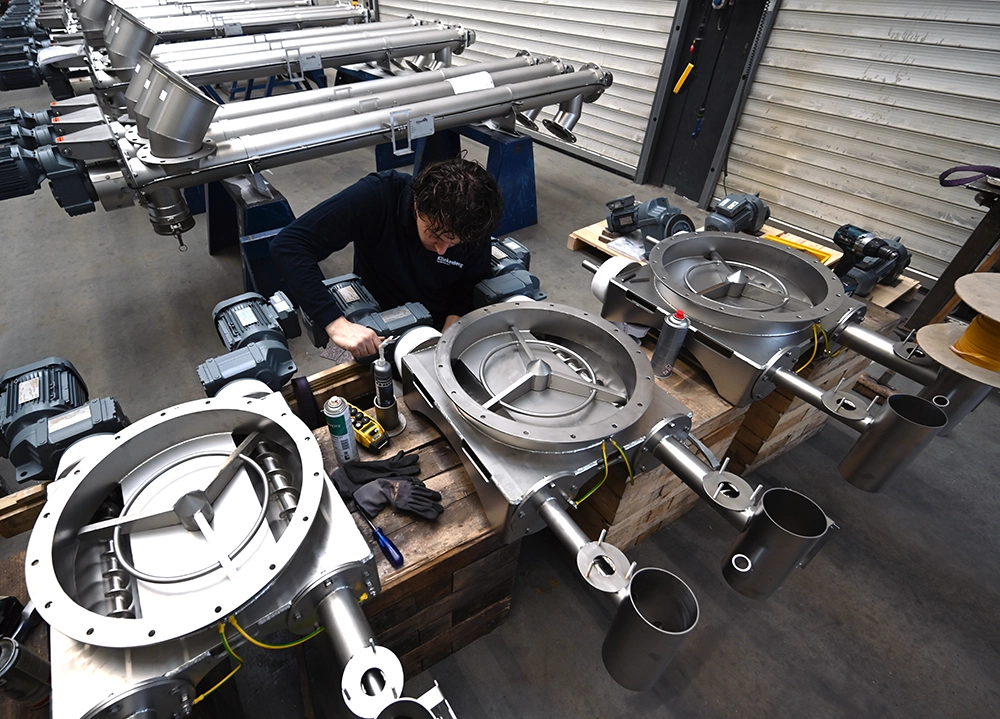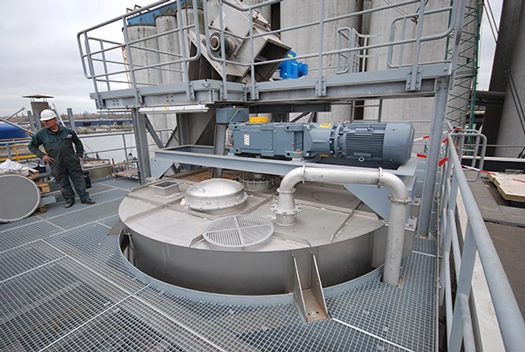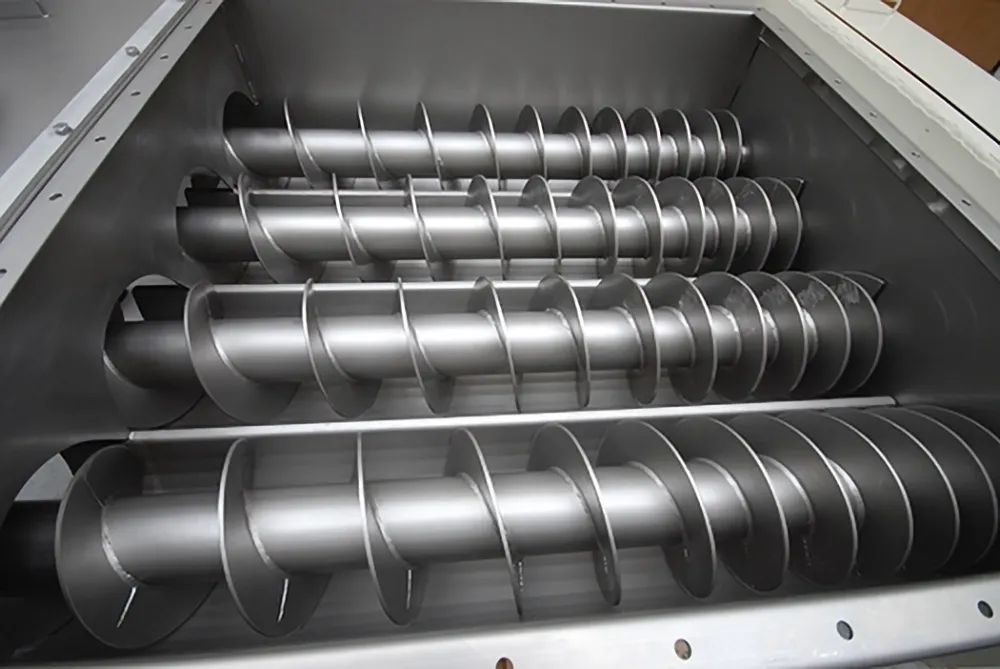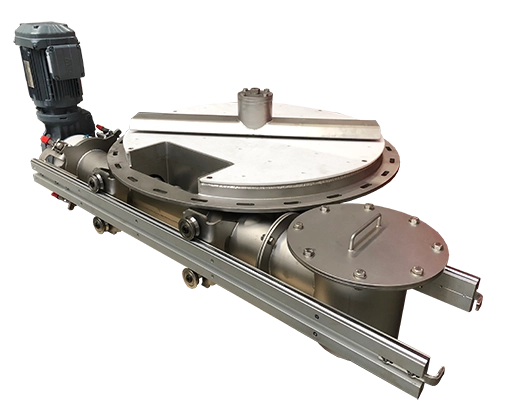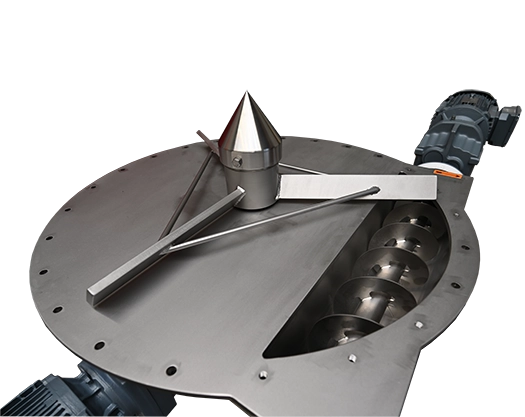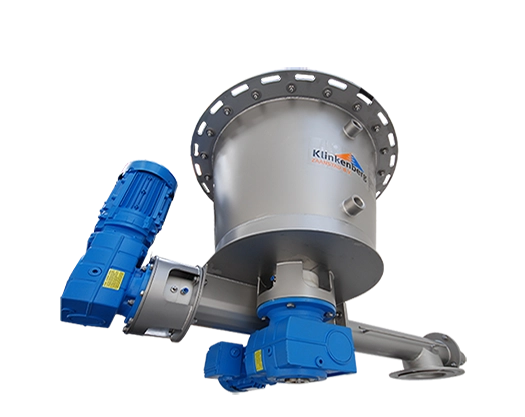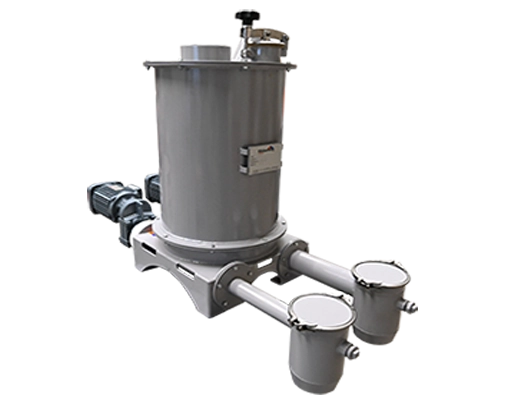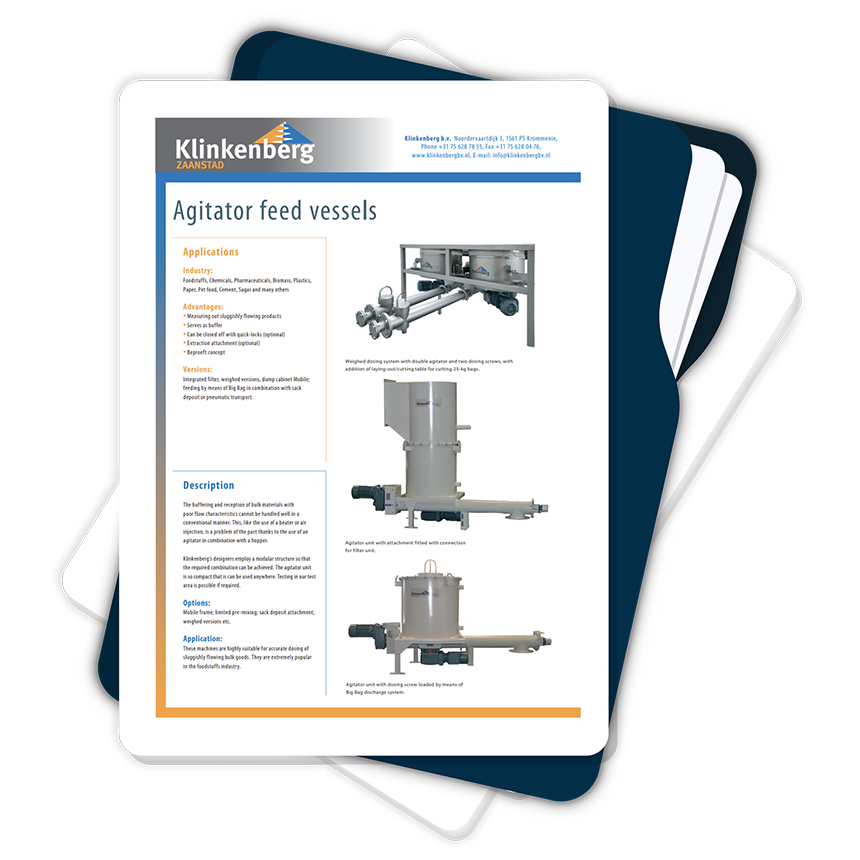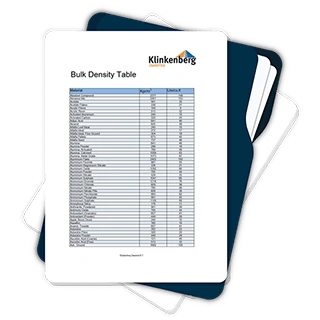Efficient solutions for conveying poorly flowing products
Buffering and conveying poorly flowing products is a complex process. According to Klinkenberg, the conventional approach is not the best solution. That’s why we have developed Agitator Bottoms specifically for processing sluggish powders, fibers, and cohesive materials. These can be expanded with a hopper, allowing you to handle viscous materials efficiently. Klinkenberg offers a variety of options for our Agitator Bottoms.
- Simple design
- Easy to maintain
- Compact build
- Suitable for compacting products
What is an Agitator Bottom?
An Agitator Bottom is a specially designed system mounted at the bottom of a silo or storage vessel. Using a mechanically driven scraping mechanism, solids are loosened and directed in a controlled manner toward a conveying or dosing system. This prevents bridging and rat-holing, which are common problems with poorly flowing materials.
The Agitator Bottom is equipped with

